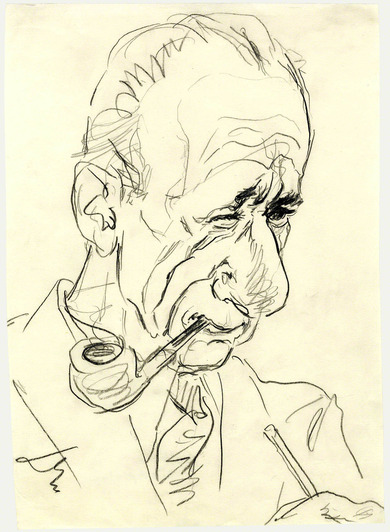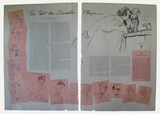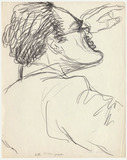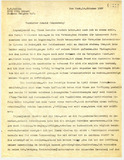Fred Dolbin(Fred Pollack, Benedikt Fred Dolbin)
Fred Dolbin(Fred Pollack, Benedikt Fred Dolbin)
Was Du da über Deine Pläne [...] schreibst, ist sehr erfreulich. New York ist wirklich eine großartige Stadt, bietet tausend Möglichkeiten und liegt in einem Land, das wohl kaum je in Kriegsgefahr geraten kann. Und wir wären uns nahe. Ich komme ja doch nicht so leicht wieder nach Europa zurück.
[What you’ve written here […] about your plans is very pleasing. New York really is a tremendous city, offering thousands of possibilities – and it is in a country that is hardly likely to ever encounter the dangers of war. And we would be closer to each other. For me, getting back to Europe is not easy. (ed. trans)]
Benedikt Fred Dolbin in a letter to his sister, Bella Paalen, on 11 December 1936, New York
| Born | on 1 August 1883 in Vienna, Austria |
|---|---|
| Died | on 31 March 1971 in Jackson Heights, New York, United States of America |
| Exile | United States of America |
| Profession | Graphic designer |
Benedikt Fred Dolbin, real name: Fred Pollack, was a member of Vienna’s art and coffeehouse circles. Although he initially trained and qualified as an engineer, Dolbin went on to study composition with Arnold Schönberg and was active as a member of the Vienna art group Die Bewegung. From around 1917 onwards, Dolbin began to devote himself to the art of drawing, which he taught himself, producing portraits of famous poets, literati and artists for a number of Viennese newspapers. After moving to Berlin, Dolbin started working as a cartoonist for the Berliner Tageblatt newspaper and the prestigious monthly magazine Querschnitt, while also lending his services to the literary journal Die Literarische Welt, which was founded by Willy Haas.
With the Nazi takeover of power Dolbin could scarcely continue his activities as a cartoonist: he was not granted a work permit on account of his Jewish heritage. Forced into making a dramatic change, Dolbin emigrated to the USA in 1935, accompanied by his third wife, who held American citizenship. Despite receiving recognition in artist circles, he failed to achieve success in the USA due to the disparity between his style and the US-press standard. As a result, Dolbin created mostly personal portraits during his period of exile, working on the projects of his exiled friends, among them Max Reinhardt, Franz Werfel and Kurt Weill. After the war, Dolbin’s art was slowly rediscovered giving rise to exhibitions and publications of his work.
Further reading:
Will Schaber: B.F. Dolbin: Der Zeichner als Reporter. München: Verlag Dokumentation 1976






